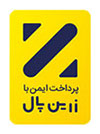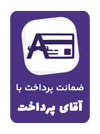Bilingual Glossary
Glossaries
Primary or native language learned and used first by students regardless of later proficiency in that language. Students may have multiple primary languages.
The process of learning a language. From birth through age five, children subconsciously acquire the basics of their home language (phonology, morphology, syntax, pragmatics) assuming the absence of a disability and access to human language input. From ages six and continuing throughout adulthood, individuals continue this subconscious learning adding layers of complexity to what they already know. Each grade level of formal school instruction adds to the cognitive complexity of spoken and written language development.
A term used to describe children who use their developing bilingual language skills to act as translators between institutions and their family members and to assist their peers or siblings who may not know as much English as they do.
The measurement of the degree of bilingualism which implies a comparison of the proficiencies in two or more languages.
Synonyms: LEA
An approach to reading instruction based on information and stories developed from students’ personal experiences. The stories are written collaboratively by the teacher and the students, then the teacher and students read them together. The goal is for the students to associate the written form of English with the spoken form.
In contrast to language acquisition, language learning is not communicative. This type of learning results from direct instruction about the rules of language. Learners have conscious knowledge of the new language and can talk about what they know.
Language loss occurs when a minority group member cannot do the things with the minority language that he or she used to be able to do; or when some of the proficiency is no longer accessible. Language loss may also refer to incomplete or imperfect learning of a language spoken in childhood.
The degree to which the student exhibits control over the use of language, including the measurement of expressive and receptive language skills in the areas of phonology, syntax, vocabulary, and semantics and includes the areas of pragmatics or language use within various domains or social circumstances. Proficiency in one language does not imply proficiency in other languages.
Language register refers to different forms of the same language that are used with certain people or in certain situations.
In Ohio, HB 3 defines an LEP student as:
- between the ages of 3 and 21years,
- enrolled in an elementary or secondary school,
- having a language other than English as the native/home language, whether born in the U.S. or another country,
- having such difficulty speaking, reading, writing, or understanding English that the student may be unable to perform well enough in class or on state tests to meet expected state standards for achievement.

 Persian
Persian  English
English  Arabic
Arabic 



